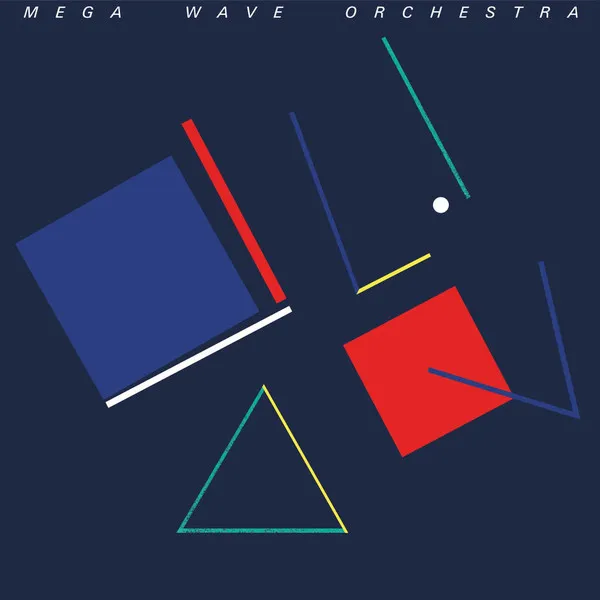- LP
- Recommended
- Back In
Mega Wave Orchestra
Mega Wave Orchestra
Libreville Records - Cat No: LVLP-1905
- updated:2022-11-21
88年のスイス産 シンセサイザーダンス、エレクトロニック・フュージョン。数学者でもあるコンポーザーのCHRISTIAN OESTREICHER発案によるマルチメディア・ミュージックとアートワークのコンセプト作品、5組のアーチスト5部作で構成されたMEGA WAVE ORCHESTRAのプライヴェートリリースからコンパイル。Olivier Roggによる、ミニマル、メロディアス、エレクトロニック・ファンク超いい曲「GE/CH: Seq」筆頭にじっくりどうぞ。
Track List
The music on this compilation was, for the most part, originally released privately in Geneva in 1988; the Mega Wave Orchestra, the brain-child of musician, mathematician and composer Christian Oestreicher, was conceived as an multi-media electronic music orchestra.
The Orchestra created a new hybrid music. It was a music with roots in the jazz and classical traditions, but one which also drew on the sonic freedom of musique concrete and the kind of total experience offered by psychedelia. The diverse backgrounds and specialisms of each of the band members/writers resulted in a wide variety of music: from austere drones and granular aural detail to warm oddball fusion and gorgeous but cracked vocal jazz. But it was Oestreicher’s presence, at both the start and end of the process, that provided a sure conceptual framework and a comprehensive sound world. There are useful contemporary comparisons to be made: zoned synth jazz like the Azimuth LP on ECM or Karin Krog’s Freestyle; Larry Heard’s sequencer dreamtime; the Valium minimalism of Pep Llopis or Jun Fukamaki; Dexter Wansel’s shimmering arrangements for Loose Ends, or even the FM sheen meets cold war threat of Donald Fagen’s Night Fly. Here, too, is the sound of music technology about to snowball and define its own aesthetic, unknowingly prefiguring auteurish bedroom producers like Black Dog or The Detroit Escalator Company.
The heart of this music’s appeal lies in Oestreicher’s complex intentions and methodologies. He revels in occupying the unsteady ground between analogue and digital, pushing his players to robotic precision while opportunistically grabbing on to the unpredictable results of computer error. He harks back to communal rigour of big band or orchestra structures, while understanding beautifully that the sounds of the future will not be synthesised imitations of existing instruments but something entirely other. He seizes on the value of resituating or recombining the sounds given to him by his bandmates, twisting them out of shape to create vivid new worlds for the listener to occupy. As a mathematician, he approaches the problem of group music making with a seriousness that results in beauty as a matter of course.
The Orchestra created a new hybrid music. It was a music with roots in the jazz and classical traditions, but one which also drew on the sonic freedom of musique concrete and the kind of total experience offered by psychedelia. The diverse backgrounds and specialisms of each of the band members/writers resulted in a wide variety of music: from austere drones and granular aural detail to warm oddball fusion and gorgeous but cracked vocal jazz. But it was Oestreicher’s presence, at both the start and end of the process, that provided a sure conceptual framework and a comprehensive sound world. There are useful contemporary comparisons to be made: zoned synth jazz like the Azimuth LP on ECM or Karin Krog’s Freestyle; Larry Heard’s sequencer dreamtime; the Valium minimalism of Pep Llopis or Jun Fukamaki; Dexter Wansel’s shimmering arrangements for Loose Ends, or even the FM sheen meets cold war threat of Donald Fagen’s Night Fly. Here, too, is the sound of music technology about to snowball and define its own aesthetic, unknowingly prefiguring auteurish bedroom producers like Black Dog or The Detroit Escalator Company.
The heart of this music’s appeal lies in Oestreicher’s complex intentions and methodologies. He revels in occupying the unsteady ground between analogue and digital, pushing his players to robotic precision while opportunistically grabbing on to the unpredictable results of computer error. He harks back to communal rigour of big band or orchestra structures, while understanding beautifully that the sounds of the future will not be synthesised imitations of existing instruments but something entirely other. He seizes on the value of resituating or recombining the sounds given to him by his bandmates, twisting them out of shape to create vivid new worlds for the listener to occupy. As a mathematician, he approaches the problem of group music making with a seriousness that results in beauty as a matter of course.




BONGO JOEのコンピ「INTENTA: EXPERIMENTAL AND ELECTRONIC MUSIC FROM SWITZERLAND 1981-93」で出会い、再発が存在することを知り、レーベルに直接コンタクトしました。スイス、ジュネーブの80s、数学者でもあるコンポーザーのCHRISTIAN OESTREICHERが発案し、電子音楽、前衛ピアノ、ミュージック・コンクレート+ポエット等マルチメディアミュージックで構成された、5組のアーチストと、アートワークを手掛けたデザイナーH. Richard ReimannたちによるLP x 5枚の5部作でプライヴェートリリースされたMEGA WAVE ORCHESTRAからコンパイル。日本のシンセサイザーミュージックにもつうじる80s FMのハイファイ感、ミニマリズム、ECMやKARIN KROG、LARRY HEARDも引き合いに出され紹介されています。ミッドテンポのシンセファンクの名曲「GE/CH: Seq」筆頭に80s電子音楽、素晴らしい一枚。 (サイトウ)